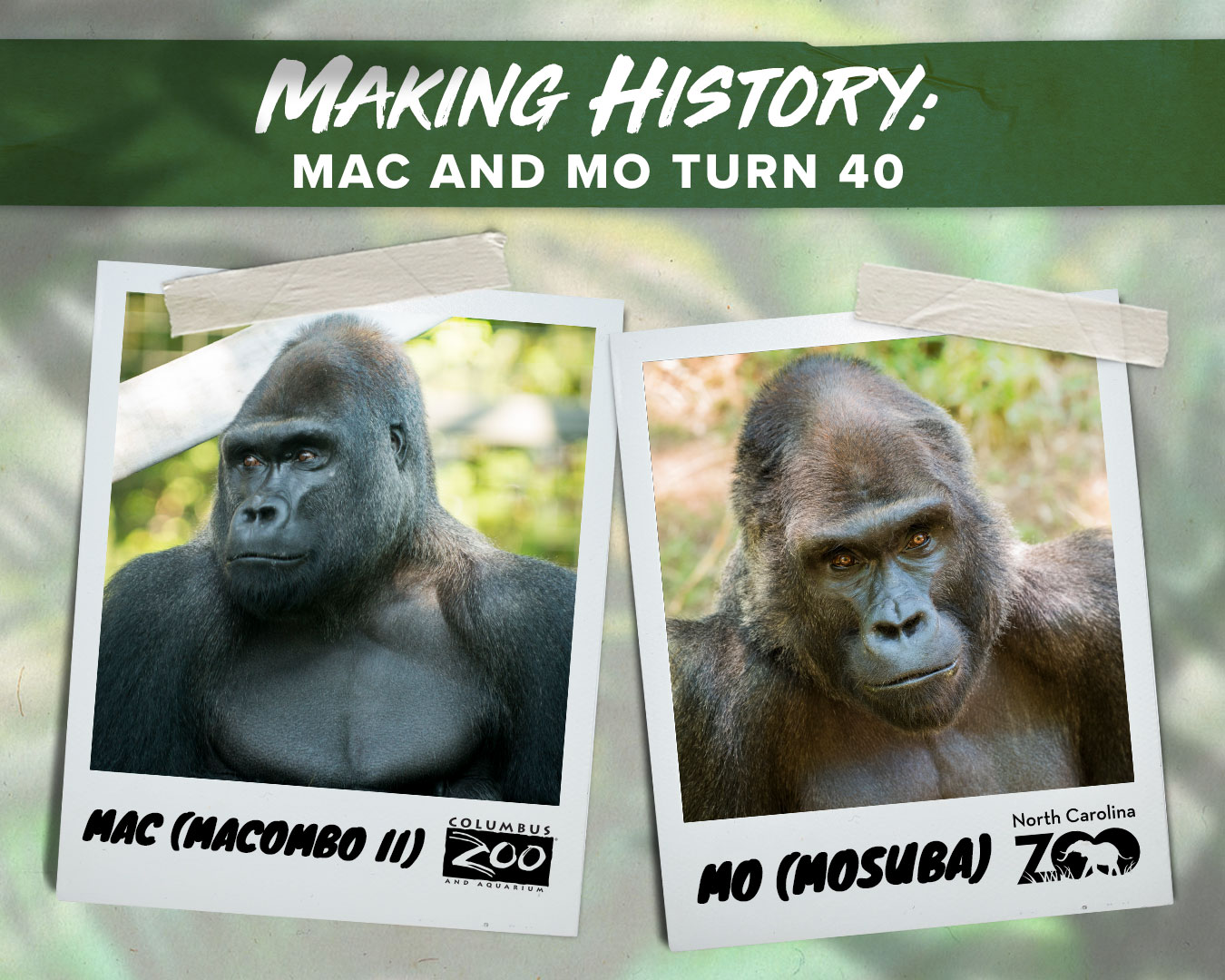
Partners in Conservation
Learn about the Zoo’s financial commitment to holistic conservation efforts in Central Africa.


In 1983, twin gorillas entered the world at the Columbus Zoo, etching a unique moment in zoo history. As the first gorilla twins born in the Western Hemisphere, their incredible story captured the hearts of zoo enthusiasts and gorilla lovers alike. Nurtured with unwavering dedication by a team of devoted volunteers, their grand introduction to the public attracted thousands of inquisitive visitors and drew awareness to the conservation of this fascinating species.
Forty years later, the Columbus Zoo and Aquarium and the North Carolina Zoo have partnered to narrate the extraordinary journey of these remarkable brothers, chronicling their accomplishments that span four decades.
The Columbus Zoo and Aquarium is world renown for achieving many “firsts” through its successful gorilla program. In 1956, the Columbus Zoo celebrated the birth of Colo, the first gorilla ever born in professional care. Since Colo’s birth, the Columbus Zoo has continued to evolve and both gained and contributed to additional scientific knowledge about Western lowland gorillas.
Over the years, Colo’s descendants have also made history, adding to the impact of the Zoo’s long-standing commitment to helping to protect gorillas in professional care and their native ranges.
While knowledge and practices have evolved throughout the last 70 years, in particular, the story of Colo’s grandsons, Macombo II and Mosuba—and the dedication of their care providers—helped build a strong foundation on which the current program has grown.
Following the discovery in July 1983 that gorilla Bridgette was carrying twins, the Columbus Zoo mobilized more than 60 volunteers, who worked around the clock to ensure that she was comfortable and that her babies would be born healthy. She was given special vitamins and comfort foods that the keepers hoped would help her remain content and was also given fresh hay each day for nesting.
Colo’s son Oscar, the twins’ father, was separated from Bridgette to prevent any potential rough activity that could result in accidental injury to her or the unborn twins.
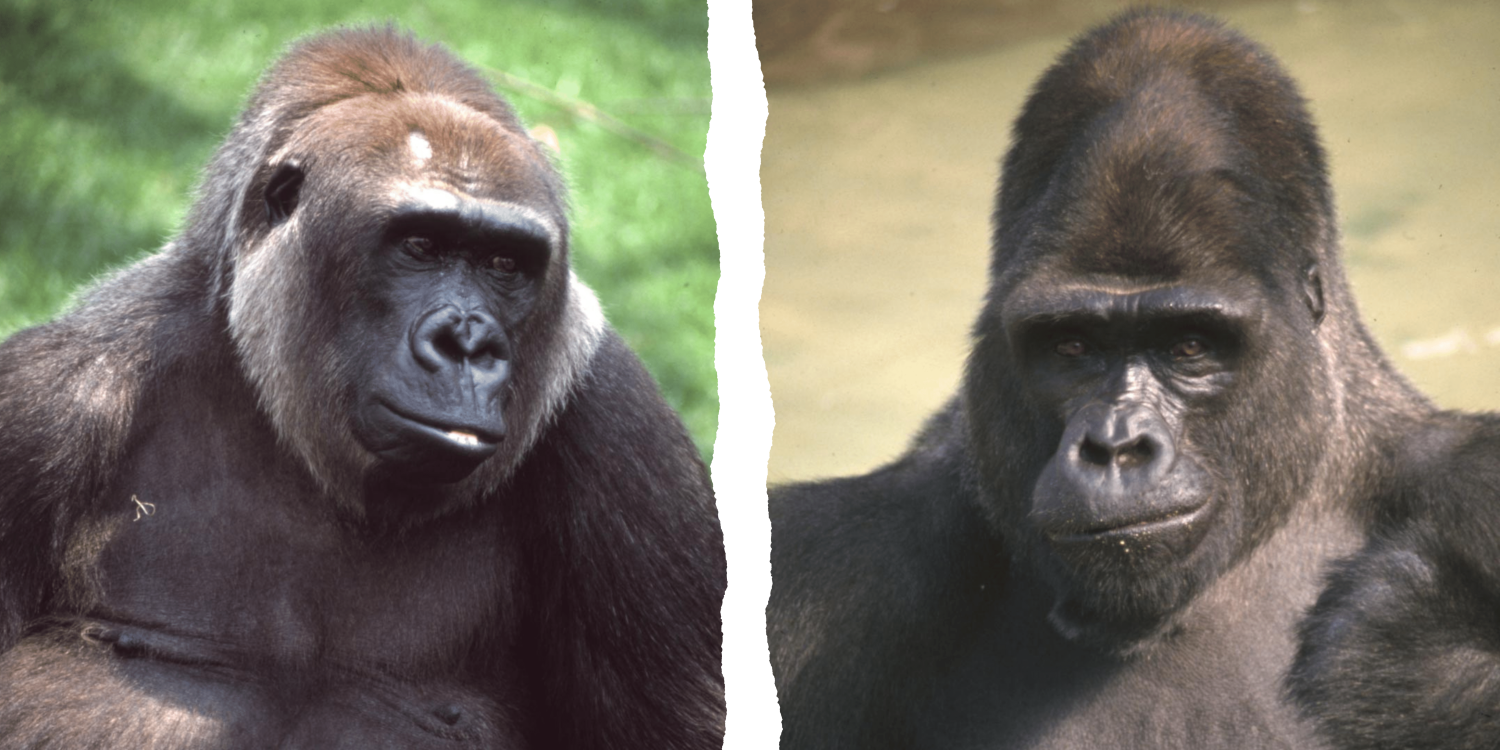
Zoo staff and volunteers watched Bridgette closely during her pregnancy. As she entered her final trimester, the Zoo monitored the fetuses’ position in the womb and was prepared to intervene during labor if necessary. A room in the Zoo's hospital was converted into a watch station where, through cameras mounted in her observation loft, volunteers and Zoo staff could monitor her progress without disturbing her.
On October 25, Jack Hanna’s wife, Suzi, was on watch. Bridgette’s water broke, and active labor began. Suzi began to record the activities and alerted Zoo medical staff, who rapidly responded.
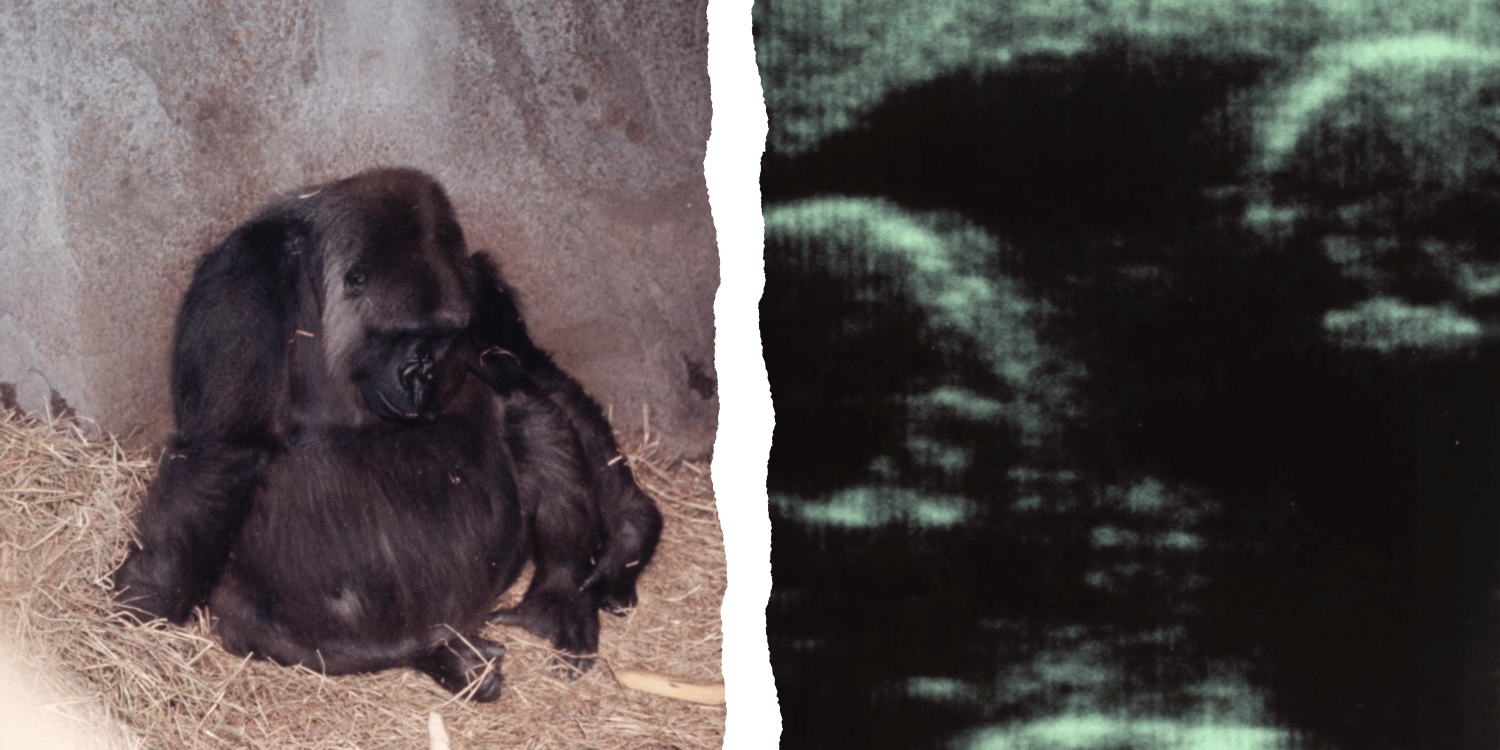
Shortly after midnight, the first baby was born. Bridgette immediate picked the baby up and cradled the little one in her arms. One minute later, the second baby was born. Instead of picking that baby up as well, she diverted her attention to the delivered placenta and began to consume it, a natural thing for gorilla mothers to do following birth.
The second baby, now on the ground, was still in the amniotic sac and needed immediate staff intervention. Bridgette and the first baby were moved to another location, allowing an opportunity for the medical staff to access the second baby and break open the amniotic sac with a small hook. The baby was then rushed to a waiting incubator at the Zoo’s hospital.
Bridgette was given time to bond with the first baby, still in her arms, and was then anesthetized so the baby could be removed to assess its health.
Both babies were male and, for the time being, were named Baby A and Baby B. They appeared healthy after birth, and Bridgette was resting comfortably. She had carried the babies to full term, and their birth weight was substantial. In fact, at 4 pounds 8 ounces each, they both weighed more than most single babies.
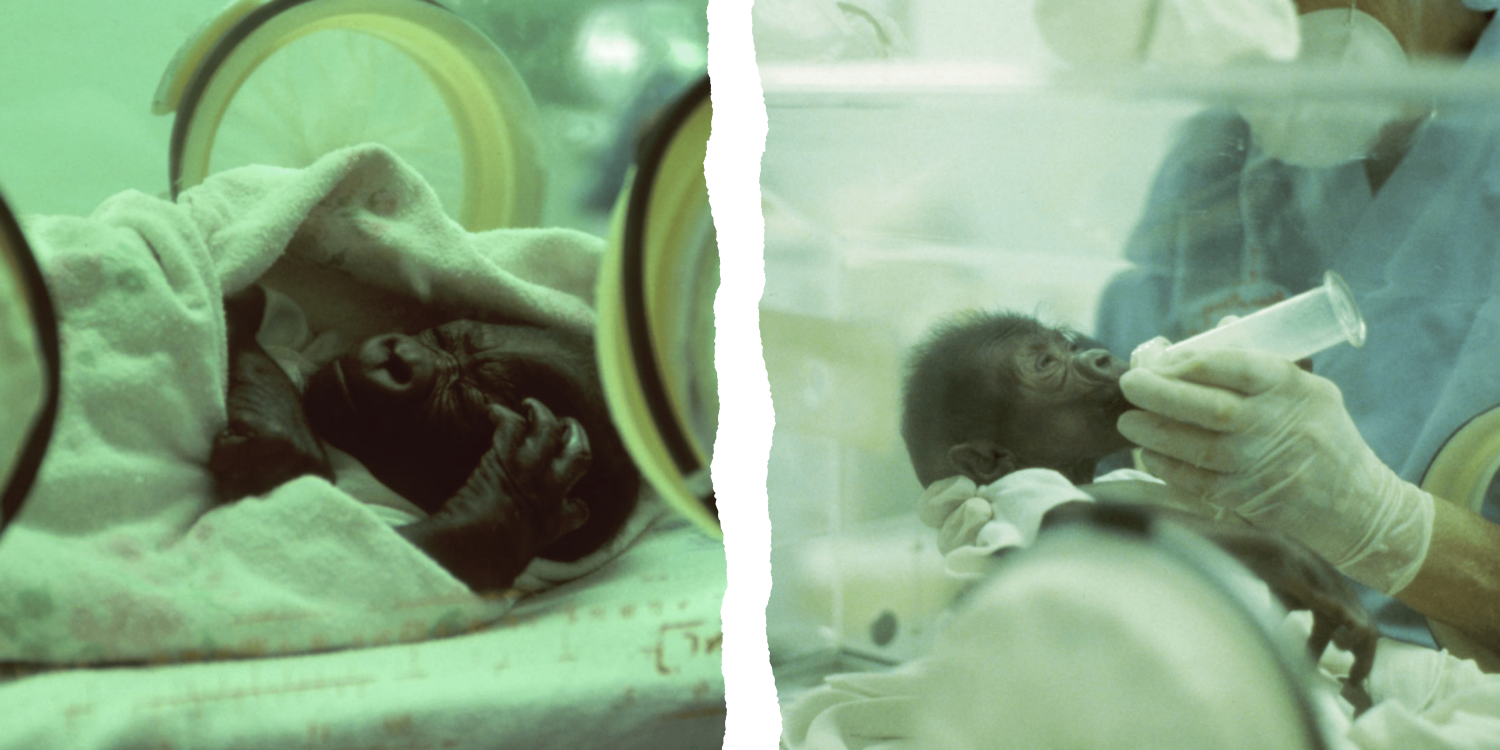
The keepers realized they had witnessed one of the rarest events in zoo history. Born October 26, 1983 at the Columbus Zoo, they were the first surviving gorilla twins born in the Western Hemisphere.
The Columbus Zoo created a “nursery,” a habitat complete with stimulating bright colors, enrichment and toys, wild gorilla sounds, and a large glass window to allow visiting Zoo guests to see the twins. On the day of their public debut, more than 600 people were waiting at the Columbus Zoo’s front gate before it even opened. In all, over 2,000 people crowded at the nursery window on that day.
In the nursery, Zoo staff (primarily Chriss Pendleton, Molly Widdis, Sue Allen, and Barb Jones) worked around the clock taking care of both twins, recording their health checks, food intake, weight gain, sleeping habits, and any other pertinent information to their wellbeing.
The twins’ mother, Bridgette, originally hailed from Omaha’s Henry Doorly Zoo and was matched with Oscar at the Columbus Zoo for breeding. She was then transferred to the Columbus Zoo to reside on a temporary basis. Before the two zoos knew that Bridgette was carrying twins, they had formed an agreement: Bridgette’s first offspring would return to Omaha, the second would remain in Columbus, and so on. However, that agreement did not include the possibility of two babies born at the same time!
After much discussion between the zoos and input from supporters nationwide, the two zoos decided to keep the twins together during their adolescent years but scheduled them to travel between the zoos. The twins visited Omaha’s Henry Doorly Zoo together twice, once in 1986, and another time in 1987.
Upon their first arrival in Omaha, the Zoo drew the biggest opening day crowd in their history with more than 7,700 guests arriving to meet the twins.
At nearly eight months, the twins were still named Baby A and Baby B...It was time for official names. Following suggestions from fans of both zoos and local leaders, two names stuck:
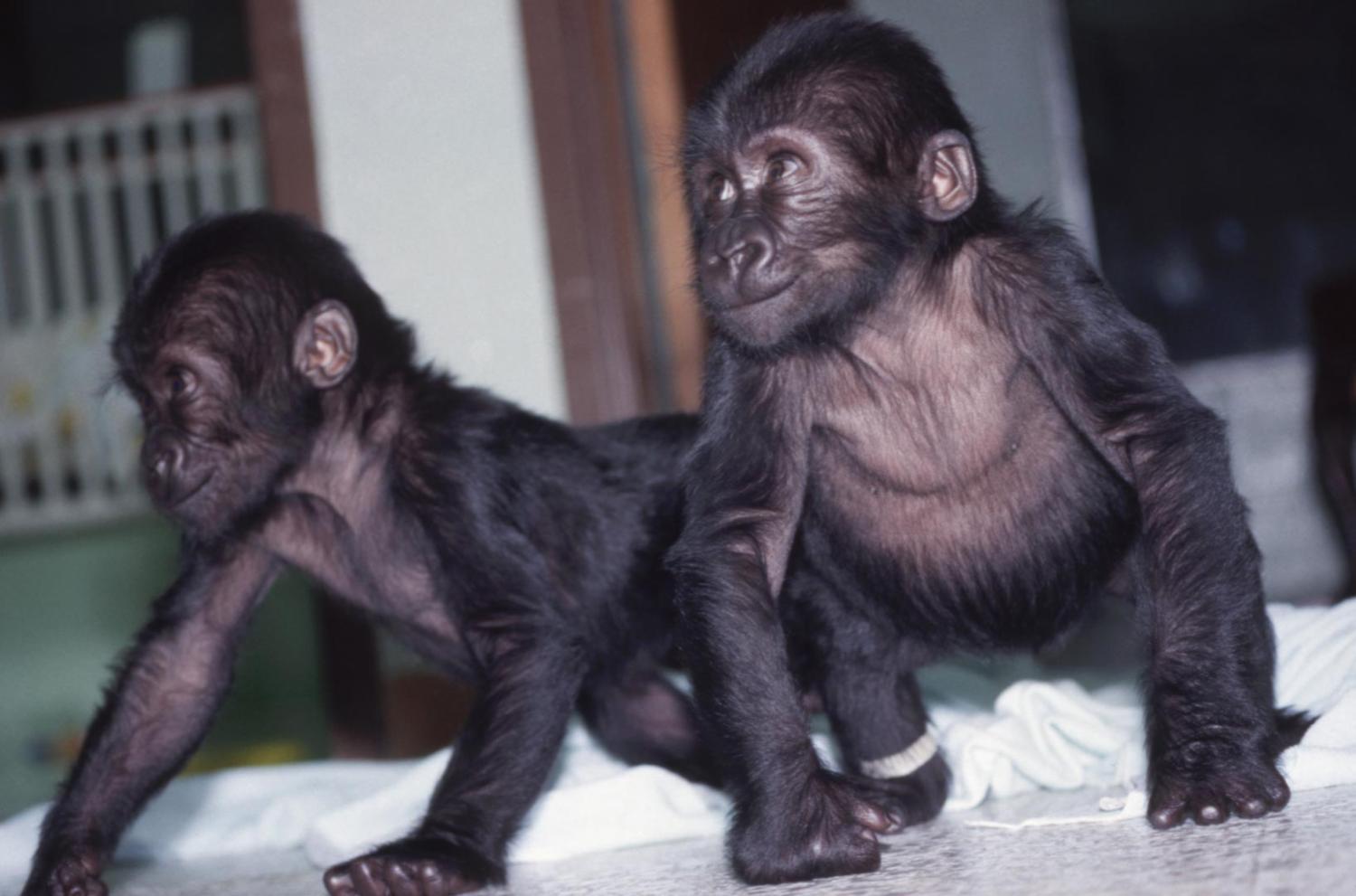
For the first few years of their lives, the twins spent their time between the Columbus Zoo and Omaha’s Henry Doorly Zoo. Their health was great, and animal medical experts from The Ohio State University even thought that the travel stimulated them both mentally and physically. They were healthier than other gorillas their age, and they were more playful and curious.
But by spring of 1987, it was obvious that the twins needed to settle into a social group, and they joined Mumbah’s group at the Columbus Zoo. As they first met the gorillas in that troop, they held hands and acted in unison during most introductions. They met their grandmother, Colo, who immediately showed them patience and kindness, but also corrected their playful behavior if they went too far when playing with siblings.
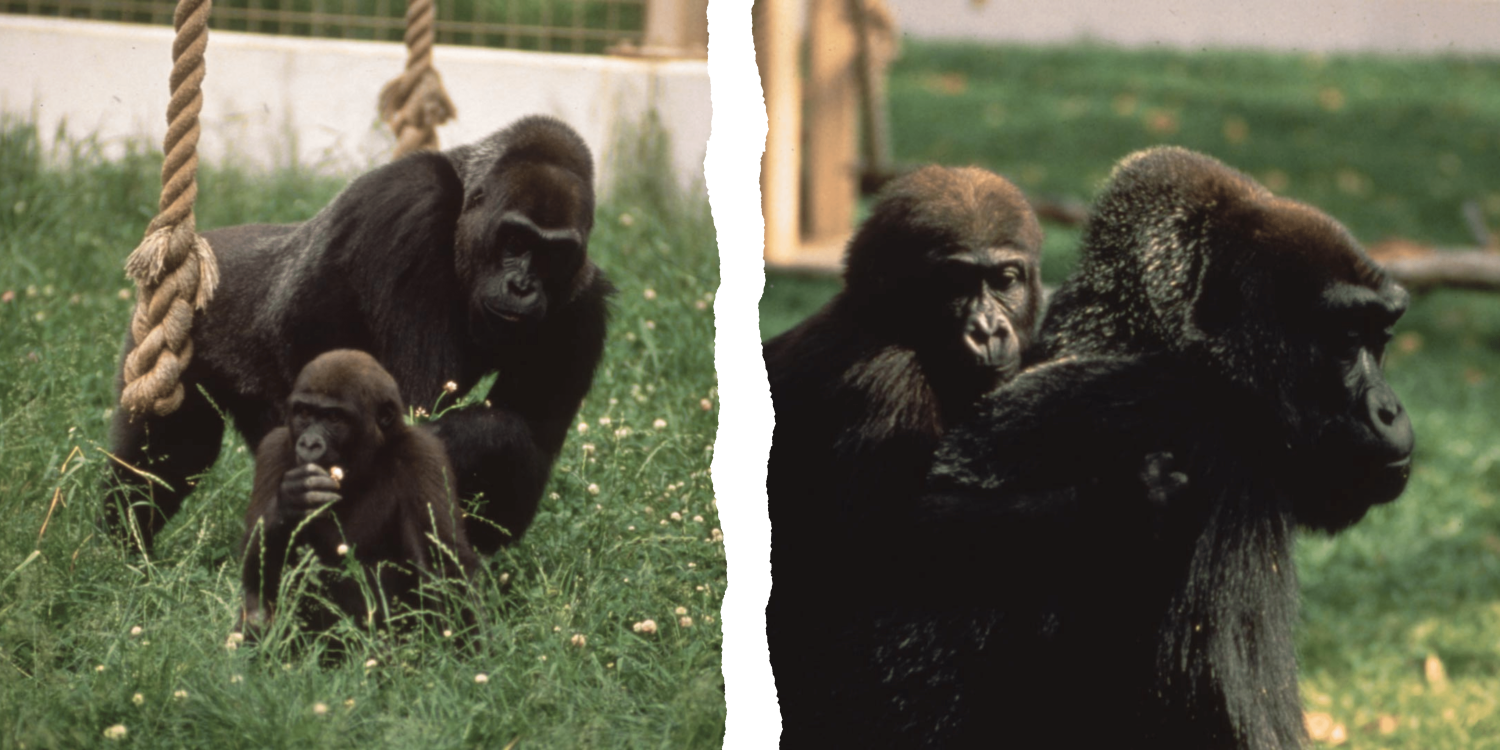
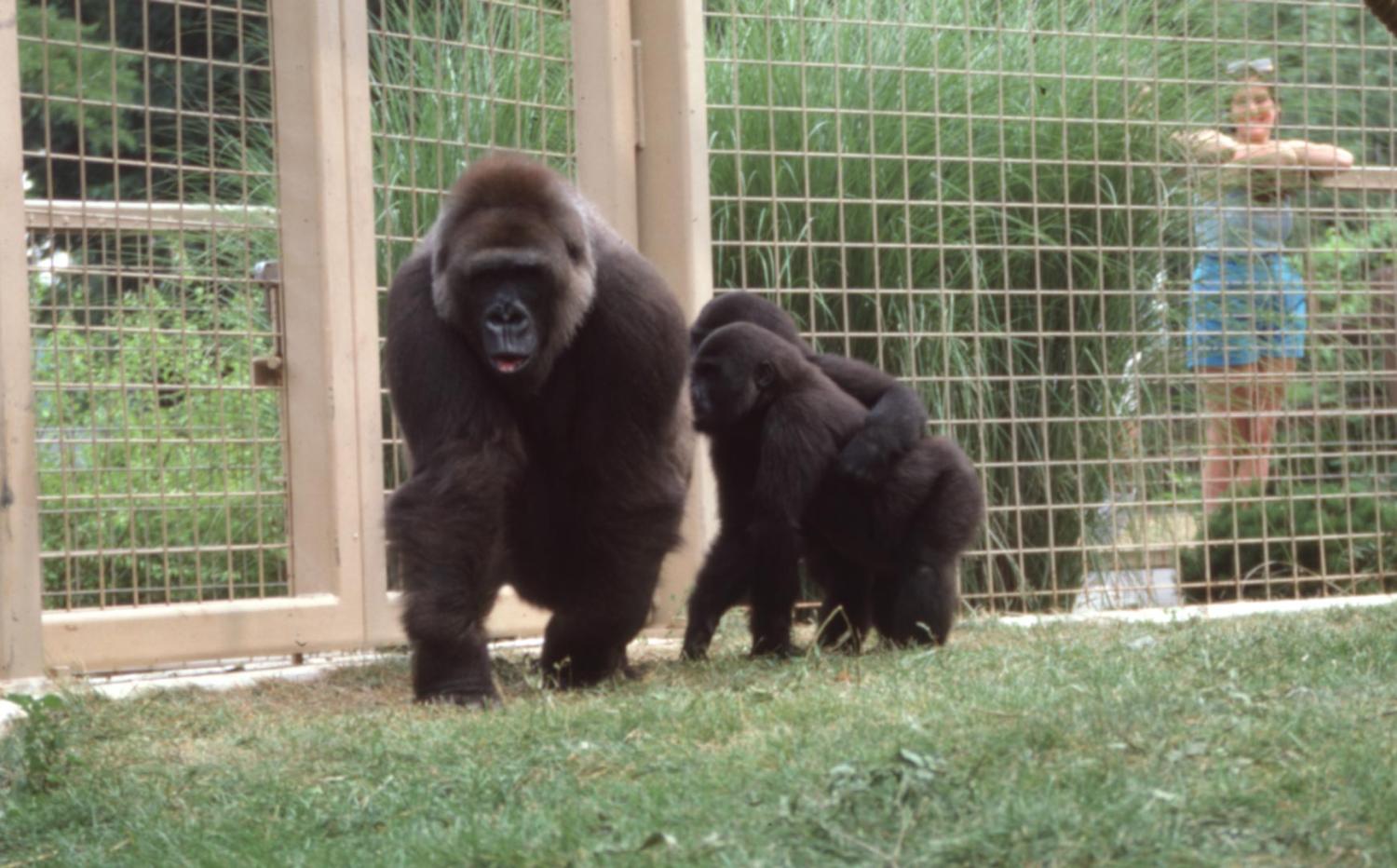
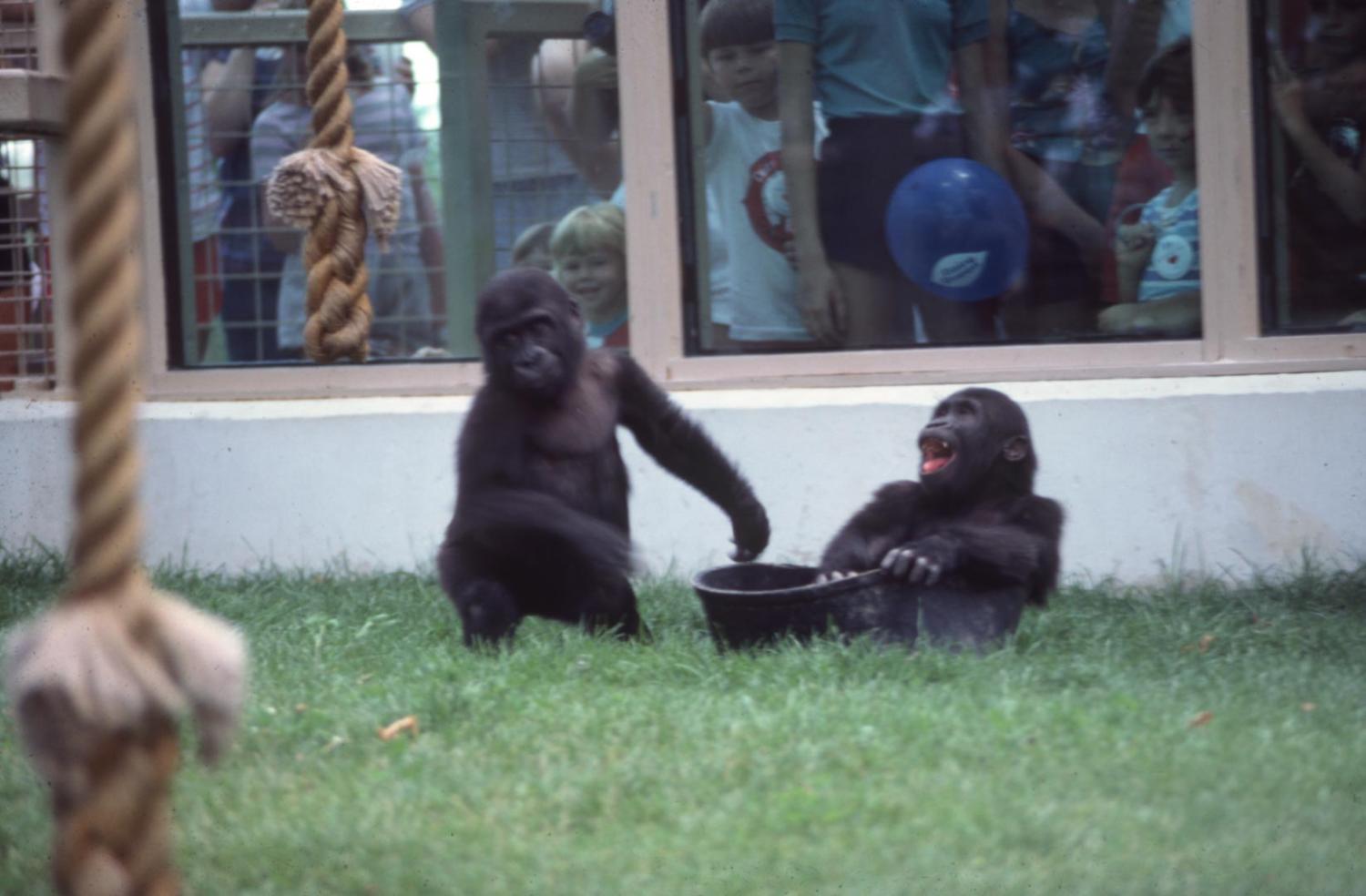
As gorillas do in their native ranges, the two would eventually go their separate ways, searching for their own troops to lead as silverbacks. So, in August of 1990, Mosuba was transferred to Omaha’s Henry Doorly Zoo and Aquarium. While he was reluctant to meet the other gorillas at first, he quickly bonded with brother Motuba, and they played themselves into exhaustion. In 1995, he became a father by way of in vitro fertilization (IVF) to Timu, a female, making additional history as the first time that IVF was successfully achieved in gorillas.
Mac, maintaining his mischievous personality, matured to silverback at the Columbus Zoo and became a father in 2016. He continues to reside at the Columbus Zoo and Aquarium, where he now leads his troop, including his son, J.J., among others.
In 2015, Mosuba moved to the North Carolina Zoo as part of the Association of Zoos and Aquariums’ Species Survival Program® (SSP), and now leads his troop.
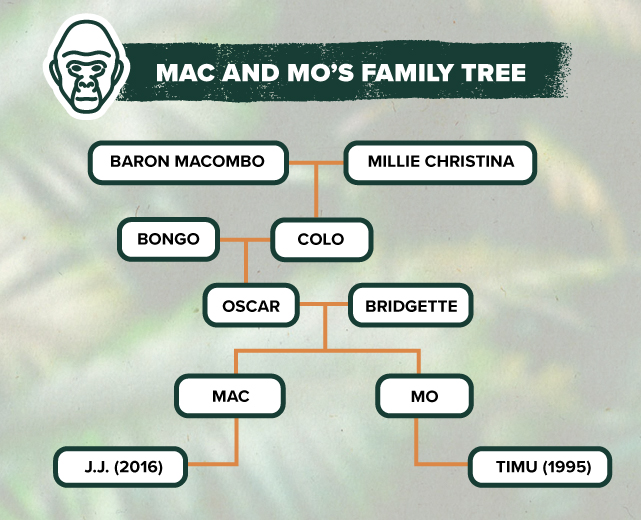

Note from Macombo's keepers:
"Mac is a kindhearted foster dad, and he learned from the best, Mumbah. His first foster was Mo’ana, then Kamoli, Kamina and Zahra. Mo’ana is now 21 years old, Kamoli is 10, Kamina is 9 and Zahra is 6 years old. They respect Mac and his size, but soon learn he is fun. Often times, they choose to spend time near Mac and eat near him.
His patience for the little ones is amazing, and he has a soft heart for girls...although his son, JJ, can do no wrong. He loves to lay down and watch his family interact with guests. He will also engage in family play, especially if there is huge pile of hay he can toss around! When he gets super excited for something, he will sit with his legs outstretched and kick his feet up and down and beat his chest with his mouth open.
When he gets his vitamins offered to him in the morning, he takes his time, using his finger to meticulously get every last bit of the peanut butter that they're mixed into out of the paper cup. He loves to train and happily grumbles when the session begins. He is incredibly smart and loves to show off his training to others as they watch.
Mac is a pro at voluntary hand-injections and ultrasound readings with a stenographer. He is currently working on blood pressure sleeve training and brushing his teeth (which he enjoys doing).
Mac is one of the first gorillas to greet you in the morning with his happy grumble and one of the last ones to grumble goodnight as you leave for the night. The gorilla building is a better place with Mac, and we are very excited to help him celebrate his 40th birthday!"

Note from Mosuba's keepers:
"Mosuba is truly a once-in-a-lifetime gorilla to work with. He loves spending time with his keepers and gets very excited to train. It does not matter the behavior...Mosuba masters it and demonstrates incredible patience while doing so.
He is one of few gorillas across the nation that has successfully participated in voluntary blood draws, and he is working hard on voluntary arm blood pressure training. One of his best behaviors is doing a voluntary cardiac ultrasound while laying down...but, who wouldn't love getting all of their favorite snacks for just lying down?!
His patience is appreciated while he interacts with all the young boys in our group: Hadari (14), Apollo, Bomassa, and Dembe (all age 11). He has been a phenomenal foster father to Apollo, Bomassa, and Dembe, and has always been willing to let them train, eat, or just relax close by.
He has been crucial in our success as we switch from a family troop to a bachelor troop. He was also the first male gorilla to participate in a successful IVF—one that, down the line, gave us Hadari, the second silverback in our troop.
Mosuba's incredible stature as a silverback has been pre-dated with a life of fame. Anyone who has met Mo will tell you he is a gentle giant, and we are incredibly fortunate to have him here at North Carolina!"
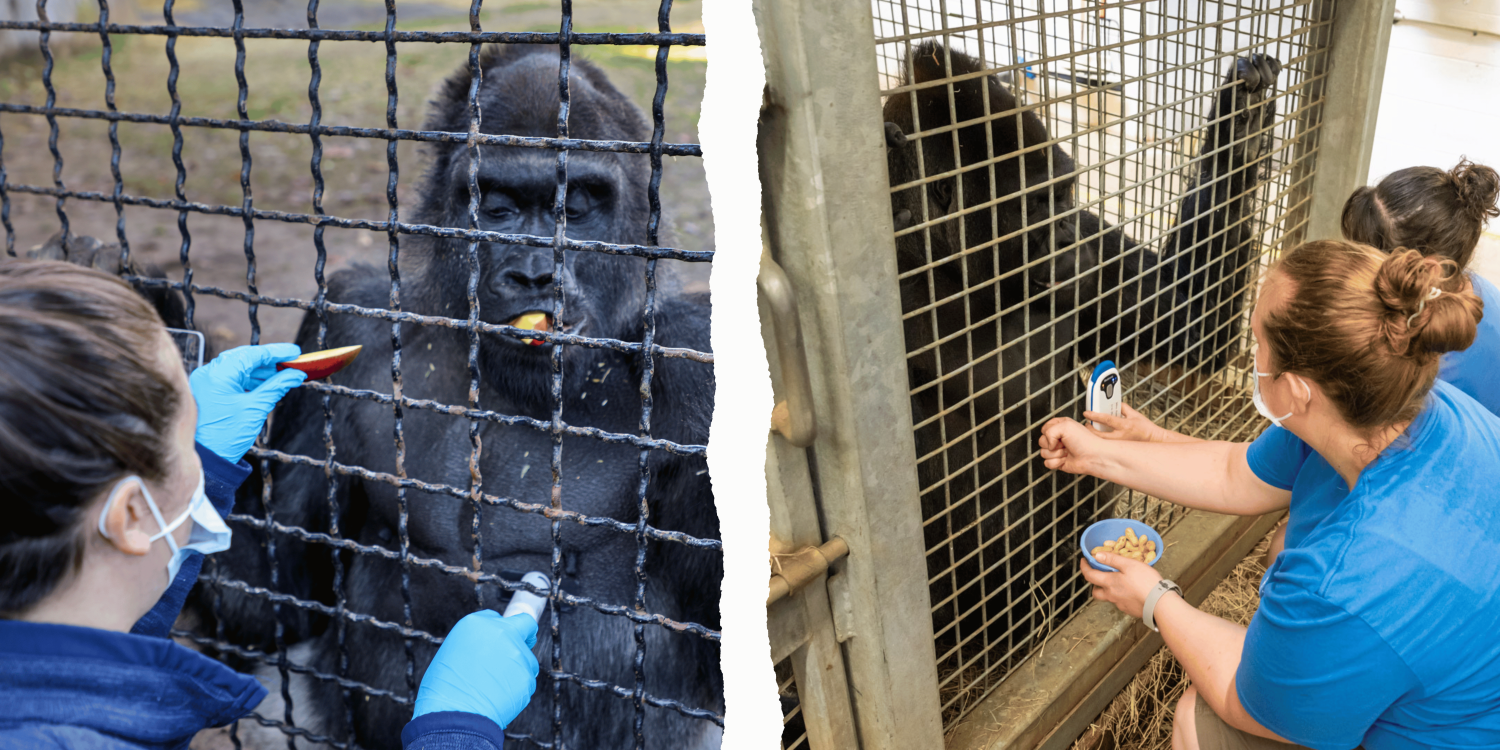
Both Mac and Mo continue to make history and have greatly contributed to the health and preservation of their species. By participating in the Great Ape Heart Project (GAHP), they provide medical information that is used to help extend the lives of great apes globally.
Mac has a cardiac monitor implanted into his chest which tracks him for signs of irregular heartbeats, called arrhythmias, and then uploads the data to the Great Ape Heart Project’s database. Mo voluntarily participates in cardiac ultrasounds, providing a wealth of information for GAHP!
Read More about GAHP at the Columbus Zoo Read More about GAHP at the North Carolina Zoo
Both the North Carolina Zoo and the Columbus Zoo and Aquarium participate in the Gorilla SAFE program!
The goal of the Gorilla SAFE program helps secure sustainable populations of all gorilla subspecies, with a targeted emphasis on protecting the fragile Cross River gorilla populations in Cameroon and Nigeria and halting the rapid decline of Grauer’s gorilla populations in the Democratic Republic of Congo.
As one way to support the program, both Zoos host Gorillas on the Line events each year, which allows guests to donate unused electronic devices and, in turn, raise awareness for gorilla conservation.
How does recycling your old phone or handheld device benefit gorilla conservation? The Association of Zoos and Aquariums reminds us that smartphones and other devices (e.g., mp3 players, phone chargers, and tablets) contain coltan, a mineral compound used to power small electronics. Coltan is mined all over the world, including in the Democratic Republic of Congo, where gorillas live. Mining for coltan and other minerals in this area can contribute to gorilla habitat destruction as well as to military and economic conflict. When we recycle our small electronic devices, we reduce the demand for conflict minerals, keep potentially harmful materials out of our landfills, and raise money for gorilla conservation.
Learn More about the Gorilla SAFE program
Learn more about GOTL at the North Carolina Zoo
Learn More about GOTL at the Columbus Zoo and Aquarium
We encourage you to visit Mac at the Columbus Zoo and Aquarium and Mo at the North Carolina Zoo, where you can learn more about their iconic legacies, watch them interact with their troops, and be reminded of the ongoing gorilla conservation efforts that they represent.
Visit the Columbus Zoo and Aquarium Visit the North Carolina Zoo
Our sincere thanks to the Animal Health, Animal Care, and Communication teams at the North Carolina Zoo, Omaha's Henry Doorly Zoo and Aquarium, and the Columbus Zoo and Aquarium, for their contributions to this article, as well as to Jeff Lyttle, author of the book Gorillas in our Midst, which served as a great resource to tell Mac and Mo's story.